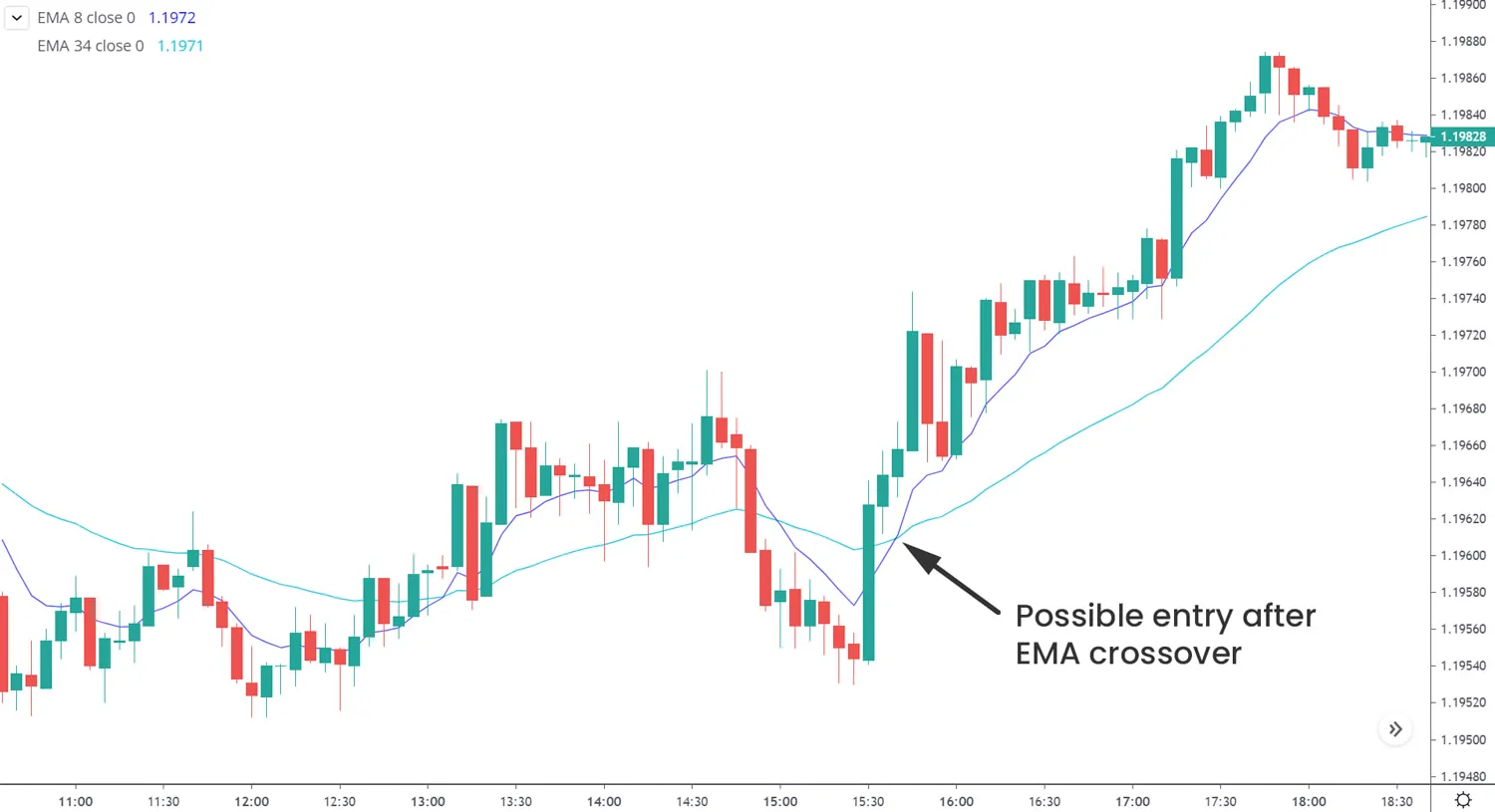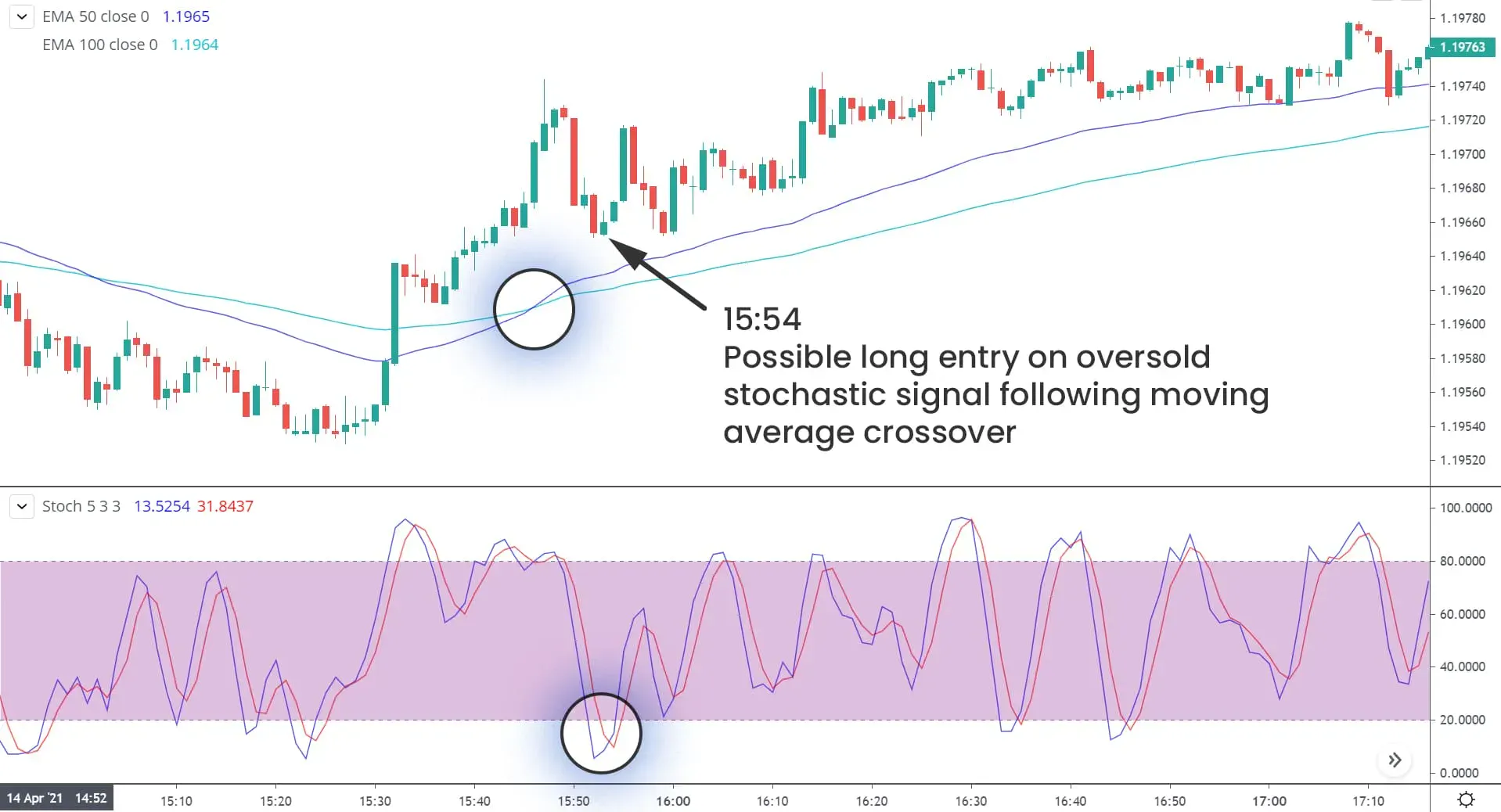Mastering forex
Forex scalping
Scalp trading forex is a way to trade currencies on the shortest timeframe charts. It's a quick and potentially exciting way to trade - that comes with upsides but also with risks.
- What is scalp trading?
- Is forex scalping profitable?
- Forex scalping risk management
- Forex scalping strategy
- Finding a trend
- Making the trade
- Forex scalping takeaways
What is scalp trading?
Scalp trading is a very short-term strategy that involves taking lots of small profits each day. Scalpers will open and close multiple positions each session – with some trading every few minutes or even seconds as they hunt for opportunities.
|
Name: |
Scalping |
|
Timeframe: |
Very short term |
|
Finds trades using: |
Technical analysis |
|
Requires: |
Lots of time, good nerves |
When scalping, you’re aiming to earn small profits from most of your trades, targeting a higher win rate than day or position trading. Once a market has moved a little bit in your favor, you exit it to realize the profit. If a market moves even slightly against you, you normally close the trade immediately and take a small loss.
Scalping is one of the most intense forms of day trading. It requires even more time, and a disciplined approach to avoid letting profits or losses run. After all, when margins are this thin, a single large loss could wipe out the gains from multiple successful positions.
While a position trade may last several months or even years, and a swing trade several days up to a few weeks, a scalp trade’s duration is mere minutes, or even seconds.
This means that scalp traders must always be fully locked onto the chart and be in a position to react to price movements in a timely manner. If a scalp trader is not focused in this way, they may miss potentially profitable setups.The below chart gives a hypothetical picture of the frequency of scalping trades, where a stochastic is used to help find entry points on a one-minute chart. Notice how five trades have been made in the space of fewer than three hours, although many scalpers will often trade much more than this in the same period.

Source: FOREX.com
Is forex scalping profitable?
Forex scalping can potentially be profitable, like any timeframe of trading.
Typically, a scalper would look to make in the region of five to ten pips per trade. But how does this translate to cash?
Let’s assume that your average pip value is about $10. You can make $50 for every five pips of profit, and if you make, say, ten trades a day, this would amount to $500. However, you must naturally also factor in losing trades – of which there might be many as a scalper – to determine profitability.
In order to give yourself the best chance for profit, you might aim for a high volume of trades per day, with a strict exit strategy and rigorous risk management practices in place. An entry and exit strategy can be assisted by technical indicators giving signals as to overbought or oversold conditions.
Forex scalping risk management
To minimize risk while scalping forex, you’ll need to primarily ensure you have a solid strategy in place. Also, due to the fast-paced nature of the short-term forex market, it helps to have a strong focus and to be observant, quick-witted and calm under pressure.
Like day trading, it’s important to go for liquid markets such as EUR/USD to minimize the risk of slippage (not being able to get your trade filled at the price you want) due to a lack of liquidity.
Scalpers also need to employ strong risk management practices. These will involve effective stop placement, meaning if the price goes too far in the wrong direction, your trade will automatically be closed.
You could also consider the 1% rule, which means never risking more than 1% of your account balance on any one trading idea. So, if you’re trading a $20,000 account, $200 would be the maximum for any one position.
Using a 1:2 risk-reward ratio, risking 1% means a trader would look to close their trades out for a 2% profit. For example, this would mean $400 profit on a $20,000 account balance or a $400 loss if the position went against you.
Meanwhile, the 5% rule advises that no more than 5% of your account balance should be at risk across all open trades. You should set the percentage that is within your risk appetite.
Forex scalping strategy
As mentioned, a successful forex scalping strategy will involve frequent trades throughout the day, looking for small gains at the most liquid times, and using technical analysis where necessary to assist with entry and exit points. But prior to opening a position, it’s essential to identify the market conditions in which a strategy will be played out. This can be done using multiple-timeframe analysis to see the bigger picture of price action.
From there, the way to proceed may depend on whether the market is trending, ranging, or about to break out. For this basic example, we’ll look at a trending market.
Finding a trend
When a market sees a protracted move in a given direction, a trend can be ascertained. A downtrend will see a series of lower lows and lower highs, while an uptrend will see higher lows and higher highs. The broader trend can be a useful barometer of potential price action on a shorter scalping timeframe.
In the below 5-minute chart, see how price moves above both the 8-period and 34-period exponential moving average (EMA). Also, the shorter period EMA crosses above the longer period EMA, suggesting a potential uptrend.

Source: FOREX.com
Making the trade
Now that a potential uptrend has been established, a shorter timeframe can be used to open and close positions. In the below one-minute chart example, an oversold stochastics signal is used to identify an entry.
To confirm the trade, you could use a moving average crossover. When the 50-day EMA crosses above the 100-day EMA, and the oversold stochastic signal follows shortly after, a long position is opened. In this scenario, you could place your stop within around 10 pips to manage risk effectively, with a potential target of two or three times the risk.
In a scalp trade, many positions of this type would be exited after just a couple of minutes, or even less than a minute, depending on the pips gained in the trade.

Source: FOREX.com
While this example uses stochastics, a range of other technical indicators such as Fibonacci retracements, MACD and RSI may also help. You can learn more in the Technical analysis course.
Scalping strategies can also be applied to ranging markets, where price is mostly going sideways. Where a price holds in a certain range, scalpers can go for a more neutral stance than in trending markets, meaning taking both buy positions near levels of support and selling near resistance. Breakouts, when price breaks through an established support or resistance level, can also deliver fresh momentum that scalpers may be interested in trading.
Forex scalping takeaways
- Scalping is risky: Employ strong risk management
- Trade the most liquid FX markets at the most active times to minimize slippage
- Use multi-timeframe analysis to assess broader trends
- Employ technical analysis to assist with entries and exits
